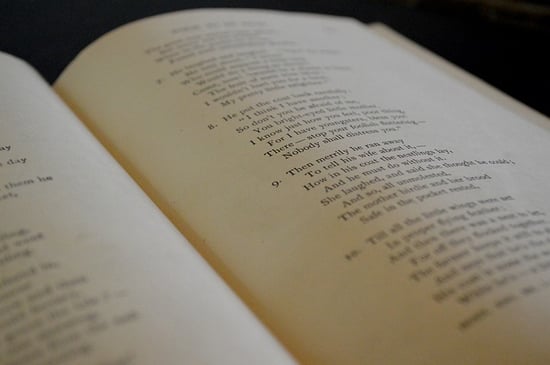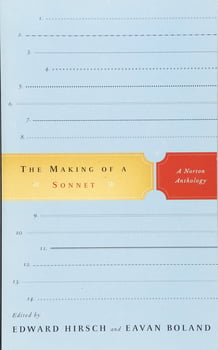Definition of Sonnet Poetry in Literature
You've probably heard about sonnets in your English class, so you already know that sonnets are an important poetic form. But it can be tough to understand what they're saying! The good news is that everyone can learn to understand poetry. It just takes practice! That's why we've picked the top 10 famous sonnets of all time and explained them. Reading the sonnet alongside an expert explanation will help you not only understand what the sonnet's about, but it will help you test your own analytical skills, too. To help you master the sonnet, our guide is going to do the following: Now, without further delay, let's check out some sonnets and sonnet examples! A sonnet is a type of poem that is comprised of fourteen lines of verse that follow a specific rhyme scheme, depending on the type of sonnet. The word "sonnet" comes from the Italian word sonetto. And what does it mean? Literally, "little song." Since sonnets follow a strict rhyme scheme, they can definitely sound melodic when read aloud. The different origins of the sonnet in Italy and England resulted in the creation of different rhyme schemes, topics, and themes of sonnets. However, any sonnet, no matter the type, is going to have the following: For more information, be sure to check out this article that talks about the elements of a sonnet in more detail. (It also explains the different types of sonnets, too!) To understand sonnets better, it helps to look at examples. And guess what? That's what we're going to do! We've chosen the top 10 sonnets of all time. For each poem, we're going to give you background info on each sonnet, identify the type of each sonnet example, and briefly analyze the poem. The first five in our list are Shakespearean sonnet examples, and the last five in our list of sonnet examples touch on the different types of sonnets, including Spencerian, Modern English, Miltonic, and Italian/Petrarchan sonnet examples. And, remember: interpretations of the meaning of literary works are always somewhat subjective, so feel free to add your own analyses or research to our readings of these top 10 sonnet examples too! My mistress' eyes are nothing like the sun; Here's the first Shakespearean sonnet on our list—and it's one of Shakespeare's most famous. Like many sonnets, this one praises the appearance of the poet's lady love..but with a unique twist. Specifically, the poet is comparing his mistress's appearance to the things we often find beautiful in nature: bright, red coral, white snow, red and white roses. But, the poet isn't making these comparisons in a complementary way. In fact, he's claiming that his mistress's beauty is nothing like the bright sun, the red rose, and the white snow! What's the deal with that?! But then the volta happens in the couplet. In a sonnet, a volta is the turn, or the moment where the poet shifts his topic. In a sonnet, this is usually the moment where the poet answers the question he poses in the earlier verses! Let's take a look at how the volta works in this poem. In the three quatrains, the poet sticks to that theme: his lady love's beauty pales in comparison to the natural beauties he observes around him. When we get to the couplet, however, the tone shifts abruptly with the use of the phrase, "And yet." Even though his mistress's eyes don't shine like the sun and her lips aren't as red as a rose, the poet still finds her rare and beautiful anyway. So why does the poet describe his mistress like this? It seems kind of rude to bring up all the ways that her beauty doesn't live up to the vividness of nature. But Shakespeare's point in this sonnet isn't really about his mistress at all: it's a satire about the false, idealized image of feminine beauty often portrayed in sonnets during the Elizabethan Era. Shakespeare is basically making fun of this tendency to use the sonnet to laud an impossible and unattainable image of feminine beauty by painting a realistic picture of his mistress and emphasizing that he loves her the way that she is. (It's the modern equivalent of loving someone with #nofilter.) Shall I compare thee to a summer's day? Unlike our first example, this sonnet keeps with the traditional theme of comparing the beauty of the poet's love interest to the beautiful aspects of nature. This sonnet seems to take a more traditional approach to comparing "thee"—likely the poet's love interest—to the pleasant aspects of nature than the first sonnet in our list. This time, the poet's love interest even more lovely than a summer's day! But the poet is talking about more here than simply his love interest's looks: he's talking about her youth. Here's how we know that: the poet mentions how summer is too short, how nature changes course, and how that which is "fair" declines as time passes. The poet is talking about how, as time passes, we grow old! If you want to think about youth and age in terms of seasons like the poet does, you could associate youth with summer, and aging with the transition into fall and winter as the earth grows cold and the leaves fall from the trees. And that's exactly what happens to the poet's love interest over the course of the poem. But! At the beginning of the third quatrain, the poet makes use of a volta: "But thy eternal summer shall not fade." In the second section of the sonnet, the poet associates his love interest's youthfulness with more than just age and appearance. These things, the poet seems to say, can transcend the passing of time because they are a way of being, rather than a way of looking. Don't worry: it made us say "awww," too. That time of year thou mayst in me behold This Shakespearean sonnet is addressed to a particular reader, called "the Fair Youth," and also deals with the theme of old age. In this sonnet, the three quatrains each present a different metaphor for the poet's experience with aging, signaled by the phrase, "In me thou see'st." The first quatrain compares the poet's aging to the death of autumn and nature's transition into winter. The second quatrain compares the poet's aging to the death of the daytime as the sun sets and night takes over. The third and final quatrain compares the poet's aging to a slowly dying fire. As usual, the shift, or volta, comes with the couplet at the end of the sonnet. The poet claims that the Fair Youth can see this aging occurring when he looks upon the poet, but that witnessing the poet's aging makes him love the poet even more in anticipation of the poet's eventual death. Shakespeare's use of the three metaphors build a strong connection between humans' experience of aging and dying and the natural cycles of the universe. One way to read this is that aging and dying is a natural process—one that connects humans more deeply to the universe. And as a result, it's important to value people while they're still with us. The poem "If There Be Nothing New, But That Which Is" plays on the old adage, "There is nothing new under the sun." If there be nothing new, but that which is The fourth Shakespearean sonnet on our list also comes from what is known as the Fair Youth Sequence of 1609—a sequence of 154 sonnets that chronicles the poet's expressions of love towards a young man. This particular sonnet muses on the age-old idea that there is nothing new under the sun. That notion is adapted from the biblical book of Ecclesiastes, and it essentially claims that things in life happen cyclically. Shakespeare struggles to articulate worthy praise of the youth because the praise he would give to the youth has already been written in the past about others from history. His brain "labours for invention," searching for words that would demonstrate how the youth is set apart from all these lesser beauties from the past. In fact, the poet argues that if the youth had lived in "the old world," those around him would have failed to adequately describe the youth's beauty and character. In the final couplet, the poet questions the judgment of all those from the past who lauded the beauty of others who came before (the "wits of former days") because Shakespeare is confident that there is something new under the sun: the incomparable beauty of his love interest. Not marble nor the gilded monuments This sonnet deals with the theme of the passage of time and the lasting power of words. Writing again to the Fair Youth, Shakespeare describes how written words—like those in this poem!—are far more effective at preserving things as time passes than physical, human-built monuments. And, what, exactly, is the specific "thing" that his poem is preserving? It's the image and memory of the youth, which is represented by the "you" he addresses throughout the poem. Shakespeare exaggerates his memory of the youth by juxtaposing it with descriptions of strong, durable human-made things that will crumble and decay over time. Marble, gilded monuments of princes, stone and statues, and the work of masonry will all fail to outlive the poet's memory of the youth. In fact, because of the way that a poem can easily be passed down to future generations, Shakespeare's praise of his beloved will live forever. How do I love thee? Let me count the ways. I love thee with the passion put to use The last five sonnets on our list branch out into different poets and different types of sonnets. This sonnet is by Elizabeth Barrett Browning, an English poet of the Victorian Era, and is written in Petrarchan form. Published in 1850, "How Do I Love Thee?" is easily Barrett Browning's most famous sonnet. In Barrett Browning's poem, readers encounter something rare—a woman's perspective on love. In the octave that comprises the first part of the poem, the speaker poses a question to her lover: "How do I love thee?", then proceeds to count the many ways that she loves this person. In making her list of the ways that she loves this person, the speaker explores extremes and limits: she loves him to her soul's full capacity, freely and purely. The volta occurs as the sestet begins, and the speaker turns to the past to draw upon more comparisons for her present love for her lover. In looking to the past, the speaker continues to rely on extremes to explain her love: the extreme passion one feels in moments of grief, the extreme purity of a child's faith. The poem concludes with one final extreme: even after death, the speaker will continue loving her lover. She seems to imply that her love will be immortalized, made perfect in its endurance after death. One day I wrote her name upon the strand, Here's an example of a Spenserian sonnet, which was originally published in 1595. The theme of this poem is similar to that of Shakespeare's "Not Marble Nor the Gilded Monuments" because it is concerned with the idea of eternalizing the memory of the poet's lover. (Are you starting to see ow sonnets often deal with common themes?) In the first quatrain, the poet chronicles his attempts to write his beloved's name "upon the strand" ("strand" is just another word for the seashore), but finds it continually washed away by ocean tides. In the second quatrain, it appears that the beloved speaks to the poet, using both meanings of the word "vain" to tell the poet that only a vain man would continue making vain attempts to immortalize something that is mortal. She points out that she will eventually succumb to death...just like her name written in the sand. In the third quatrain, the poet speaks back to his beloved, telling her how he will defy death to eternalize her: through the fame his poetic verses will bring her. In fact, his poetry is going to do one better than writing her name in the sand. His poetry is going to be so exquisite that it will write her name in the heavens. This is another sonnet that praises the ability of poetry to transcend the death and decay that mortal bodies experience as time passes. "When I Consider How My Light Is Spent" is a Miltonic Sonnet about both literal blindness and the blindness of the soul. When I consider how my light is spent, To serve therewith my Maker, and present That murmur, soon replies, "God doth not need Is Kingly. Thousands at his bidding speed This is a Miltonic sonnet—which was originally published in 1673—is sometimes titled "On His Blindness" in reference to Milton's experience of going blind. However, Milton's use of the word "light" here might just mean his vision or perspective on life. In the octave—the first eight lines of the sonnet—Milton worries that he has "spent" the "light," or vision and wisdom, in his life poorly. Milton's reference to the "Talent" that is useless within him reinforces this worry. The mention of the "Talent" is a reference to a parable in the biblical book of Matthew 25, wherein a young man buries away resources he is given rather than sharing them with the world. Milton is worried that God will see that he has used the light that he was given unwisely and chastise him for it, which is exactly what happened to the young man in the parable. The sestet—the last six lines—answer Milton's earlier question about whether he's used his talents well. While Milton feels that maybe he would have better served his Maker through hard "day-labour," "patience" speaks up and reassures him that God needs more than one kind of servant. In addition to those who work themselves to the bone in service to their Maker, God needs those who serve by standing and waiting. In the end, the poem argues that those who wait for God to lead them are true servants as well. What lips my lips have kissed, and where, and why, Edna St. Vincent Millay, a prolific poet of the early twentieth century, writes a Petrarchan sonnet here. "What My Lips Have Kissed" takes up the traditional theme of musing on lost loves. As a Petrarchan sonnet, the octave at the beginning embodies a tone of remembrance of the past loves, and when the turn comes with the final sestet, shifts into a tone of mourning. But unlike many traditional sonnets—like the ones we've looked at by Shakespeare and Spenser—Millay's isn't about praising the beauty and character of her past loves at all. She even admits that she forgot "what lips [her] lips have kissed" awhile ago. She can't even remember where she kissed these men, or why she kissed them! Instead, Millay's sonnet wistfully praises the memory of the way those past loves made her feel , putting a more modern spin on the sonnet's traditional theme. Though she "cannot say what loves have come and gone," again emphasizing that this sonnet isn't really about the lovers themselves, she knows that "summer sang in [her]" for a short while during those loves. That feeling of summer in her heart is what she feels she has lost, and that is what she mourns and pays tribute to in this sonnet. A portrait of the poet Billy Collins. All we need is fourteen lines, well, thirteen now, For our tenth and final sonnet in our list of sonnet poem examples, we have a more modern English sonnet by the contemporary American poet, Billy Collins. In this poem, which was published in 1999, Collins muses on the traditional form and structure of the sonnet! (It's very meta.) His "Sonnet" reflects on what meaning we can derive from looking more closely at these features of the traditional sonnet. If you want a crash course in the traditional sonnet, Collins' "Sonnet" could actually help with that. His poem identifies all of the elements of traditional sonnets: 14 lines, themes relating to love, iambic pentameter, strict rhyme schemes, the volta, and a resolution to the subject at the end of the sonnet. He even references the Elizabethan sonnet specifically and Petrarch himself! So what's the point of writing a sonnet about a sonnet, anyway? It really just seems like Collins is trying to make sonnets accessible to the everyday reader! The traditional form of the sonnet, with all of its strict requirements about stressed and unstressed syllables and rhyme schemes, can feel intimidating...especially if you're asked to write one yourself. We might even call Collins' breakdown of the sonnet playful. He's showing that it's okay for modern writers to play with the form of the sonnet in their own writing too. Since sonnets are one of the most important literary forms of all time, there are a lot of resources out there that can help you learn more about sonnets! We've put together a list of our top five picks for resources that can expand your knowledge of sonnets. Our list includes online resources, a few books, and even a pop culture take on sonnets. And all of these resources include more sonnet poem examples than you could need. What the variety in this list really shows is that sonnets continue to fascinate people, and they remain culturally relevant to this day! If self-directed, exploratory learning is your kind of thing, you might enjoy learning more about sonnets through the Poetry's Foundation's website. The Poetry Foundation is an independent literary organization whose primary goal is to give the public free access to all things related to poetry. With that in mind, you can use the Poetry Foundation's website to read tons of sonnet poem examples, explore poets' biographical profiles, peruse brief analytic articles, essays, and blog posts on sonnets, and even listen to audio recordings of readings of sonnets. We recommend getting started by using the website's search bar to search "sonnet" and seeing where that leads. One thing to note: The Poetry Foundation isn't just dedicated to sonnets, so there's a lot going on there. But if you're down for an adventure, The Poetry Foundation provides a great way to learn more about sonnets! Anyone who's looking for a deep-dive into the poets and sonnets of the Elizabethan Era should look no further than Shakespeare's Sonnets, which is an online resource that provides full-text of all of Shakespeare's sonnets with descriptive commentary. The site also includes many sonnet examples by other notable Elizabethan poets, particularly Edmund Spenser, Philip Sidney, Michael Drayton, and Sir Thomas Wyatt. We like this resource for its consistency and simplicity: each sonnet has its own page, and each page follows the exact same structure. First is the full text of the sonnet, then a brief overview of the sonnet's key themes, then a line-by-line explication of the entire sonnet. It's easy to use, and if you need a kickstart on sonnet analysis, this resource could be your go-to. If we could describe this resource on sonnets in one word, we'd go with "comprehensive." (Norton Anthologies are often used as textbooks for high school and college-level courses for a reason, after all.) This anthology traces the history of sonnets across five hundred years, analyzing the major figures and events that have made the sonnet into what it is today. This anthology is full of valuable material, too, including 300 different sonnets. Another notable feature for any educators out there is the "Ten Questions for a Sonnet Workshop," included in the anthology's appendix, which are designed to spark conversations about reading, writing, and workshopping sonnets. This book is definitely a fun take on the sonnet. (Yes, books on sonnets can be fun, we promise!) Pop Sonnets features 100 classic pop songs reimagined as Shakespearean sonnets. The book has a great sense of humor, and it builds a bridge between traditional poetry and popular culture. If you're looking for a non-traditional approach to thinking about famous sonnets, this resource is a winner. Pop Sonnets is a great inspirational resource for both students and educators, too. As a student, this book can help you figure out new, creative approaches to tackling class projects. And if you're a teacher looking for engaging, innovative ways to teach sonnets to your students, Pop Sonnets is a fantastic companion. Our last resource on sonnets gives another contemporary take on the traditional sonnet form. Shakespeare's Sonnets, Retold rewrites Shakespeare's entire series of sonnets using modern language, but keeps to the rhythm and rhyme schemes that make them so memorable. If you're the kind of reader who wants to experience the magic of Shakespeare's famous sonnets on your own, without having them over-explained but you struggle to understand the Elizabethan language, this book could be your entry point into understanding Shakespeare's sonnets all on your own. Shakespeare's Sonnets, Retold is another excellent educational resource for English teachers looking to make sonnets relatable for today's students. The book is also super current—it was published in August 2018! Did you read the analyses above and...well, wonder how the heck to come up with an analysis yourself? Never fear: all it takes is making sure you have the right tools for the job. Here's a list of the 31 literary devices you need to know (and a guide to the 9 literary elements that are present in every poem ever). If you're not quite sure what a literary device is or how to use it, that's okay! Here are some in-depth posts on imagery, assonance, point of view, and personification that define these important terms and show you how to find them in literature. When it comes to understanding poetry, it's really helpful to see how others analyze poems. Luckily, we have great resources for you! Check out this post that walks you through a complete analysis of Dylan Thomas' "Do not go gentle into that good night." These recommendations are based solely on our knowledge and experience. If you purchase an item through one of our links PrepScholar may receive a commission. 
What Is a Sonnet?

The 10 Most Famous Sonnets of All Time, Explained
#1: My Mistress' Eyes Are Nothing Like the Sun , by William Shakespeare (Shakespearean Sonnet)
Coral is far more red than her lips' red;
If snow be white, why then her breasts are dun;
If hairs be wires, black wires grow on her head.
I have seen roses damasked, red and white,
But no such roses see I in her cheeks;
And in some perfumes is there more delight
Than in the breath that from my mistress reeks.
I love to hear her speak, yet well I know
That music hath a far more pleasing sound;
I grant I never saw a goddess go;
My mistress, when she walks, treads on the ground.
And yet, by heaven, I think my love as rare
As any she belied with false compare. 
#2: " Shall I Compare Thee To A Summers' Day?" by William Shakespeare (Shakespearean Sonnet)
Thou art more lovely and more temperate:
Rough winds do shake the darling buds of May,
And summer's lease hath all too short a date;
Sometime too hot the eye of heaven shines,
And often is his gold complexion dimm'd;
And every fair from fair sometime declines,
By chance or nature's changing course untrimm'd;
But thy eternal summer shall not fade,
Nor lose possession of that fair thou ow'st;
Nor shall death brag thou wander'st in his shade,
When in eternal lines to time thou grow'st:
So long as men can breathe or eyes can see,
So long lives this, and this gives life to thee. #3: " That Time Of Year Thou Mayest In Me Behold " by William Shakespeare (Shakespearean Sonnet)
When yellow leaves, or none, or few, do hang
Upon those boughs which shake against the cold,
Bare ruin'd choirs, where late the sweet birds sang.
In me thou see'st the twilight of such day
As after sunset fadeth in the west,
Which by and by black night doth take away,
Death's second self, that seals up all in rest.
In me thou see'st the glowing of such fire
That on the ashes of his youth doth lie,
As the death-bed whereon it must expire,
Consum'd with that which it was nourish'd by.
This thou perceiv'st, which makes thy love more strong,
To love that well which thou must leave ere long.
#4: " If There Be Nothing New, But That Which Is " by William Shakespeare (Shakespearean Sonnet)
Hath been before, how are our brains beguil'd,
Which, labouring for invention, bear amiss
The second burthen of a former child!
O, that record could with a backward look,
Even of five hundred courses of the sun,
Show me your image in some antique book,
Since mind at first in character was done!
That I might see what the old world could say
To this composed wonder of your frame;
Whether we are mended, or whe'r better they,
Or whether revolution be the same.
O! sure I am, the wits of former days
To subjects worse have given admiring praise. #5: "Not Marble Nor the Gilded Monuments" by William Shakespeare (Shakespearean Sonnet)
Of princes shall outlive this powerful rhyme,
But you shall shine more bright in these contents
Than unswept stone besmeared with sluttish time.
When wasteful war shall statues overturn,
And broils root out the work of masonry,
Nor Mars his sword nor war's quick fire shall burn
The living record of your memory.
'Gainst death and all-oblivious enmity
Shall you pace forth; your praise shall still find room
Even in the eyes of all posterity
That wear this world out to the ending doom.
So, till the Judgement that yourself arise,
You live in this, and dwell in lovers' eyes.
#6: " How Do I Love Thee? " b y Elizabeth Barrett Browning (Petrarchan/Italian Sonnet)
I love thee to the depth and breadth and height
My soul can reach, when feeling out of sight
For the ends of being and ideal grace.
I love thee to the level of every day's
Most quiet need, by sun and candle-light.
I love thee freely, as men strive for right.
I love thee purely, as they turn from praise.
In my old griefs, and with my childhood's faith.
I love thee with a love I seemed to lose
With my lost saints. I love thee with the breath,
Smiles, tears, of all my life; and, if God choose,
I shall but love thee better after death. #7: " Sonnet 75 " from Edmund Spenser's Amoretti (Spencerian Sonnet)
But came the waves and washed it away:
Again I write it with a second hand,
But came the tide, and made my pains his prey.
Vain man, said she, that doest in vain assay,
A mortal thing so to immortalize,
For I myself shall like to this decay,
And eek my name be wiped out likewise.
Not so, (quod I) let baser things devise
To die in dust, but you shall live by fame:
My verse, your virtues rare shall eternize,
And in the heavens write your glorious name.
Where whenas death shall all the world subdue,
Our love shall live, and later life renew.
#8: " When I Consider How My Light is Spent " b y John Milton (Miltonic Sonnet)
Ere half my days, in this dark world and wide,
And that one Talent which is death to hide
Lodged with me useless, though my Soul more bent
My true account, lest he returning chide;
"Doth God exact day-labour, light denied?"
I fondly ask. But patience, to prevent
Either man's work or his own gifts; who best
Bear his mild yoke, they serve him best. His state
And post o'er Land and Ocean without rest:
They also serve who only stand and wait." #9: " What My Lips Have Kissed, and Where, and Why " by Edna St. Vincent Millay (Petrarchan/Italian Sonnet)
I have forgotten, and what arms have lain
Under my head till morning; but the rain
Is full of ghosts tonight, that tap and sigh
Upon the glass and listen for reply,
And in my heart there stirs a quiet pain
For unremembered lads that not again
Will turn to me at midnight with a cry.
Thus in winter stands the lonely tree,
Nor knows what birds have vanished one by one,
Yet knows its boughs more silent than before:
I cannot say what loves have come and gone,
I only know that summer sang in me
A little while, that in me sings no more.
(David Shankbone/Flickr) #10: " Sonnet " by Billy Collins (Modern Sonnet)
and after this next one just a dozen
to launch a little ship on love's storm-tossed seas,
then only ten more left like rows of beans.
How easily it goes unless you get Elizabethan
and insist the iambic bongos must be played
and rhymes positioned at the ends of lines,
one for every station of the cross.
But hang on here while we make the turn
into the final six where all will be resolved,
where longing and heartache will find an end,
where Laura will tell Petrarch to put down his pen,
take off those crazy medieval tights,
blow out the lights, and come at last to bed.
 Our Top 5 Resources For Learning More About Sonnets
Our Top 5 Resources For Learning More About Sonnets The Poetry Foundation
Shakespeare's Sonnets

The Making of A Sonnet: A Norton Anthology
Pop Sonnets: Shakespearean Spins On Your Favorite Songs
Shakespeare's Sonnets, Retold

What's Next?

About the Author
Ashley Sufflé Robinson has a Ph.D. in 19th Century English Literature. As a content writer for PrepScholar, Ashley is passionate about giving college-bound students the in-depth information they need to get into the school of their dreams.
Definition of Sonnet Poetry in Literature
Source: https://blog.prepscholar.com/famous-sonnet-examples
0 Response to "Definition of Sonnet Poetry in Literature"
Post a Comment